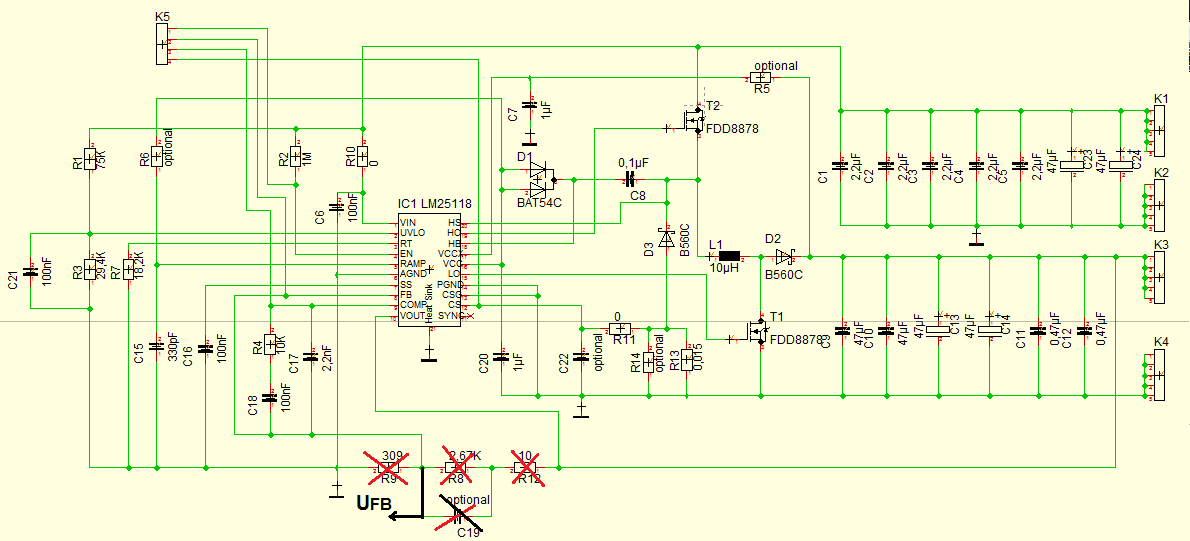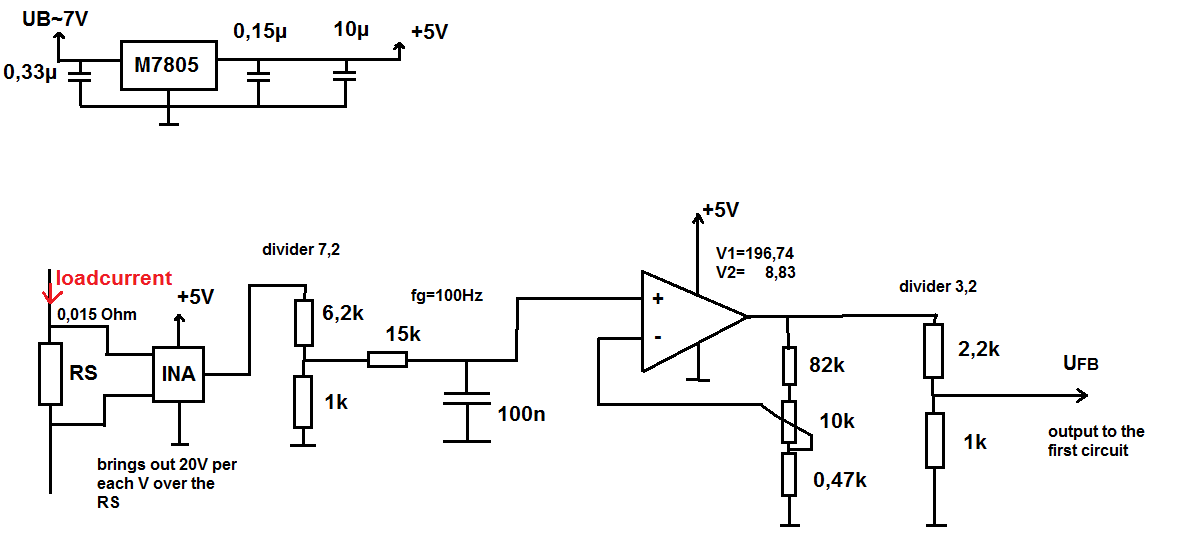Hi,
im try to develop an buck-boost-converter with a variable output voltage. I have a fix input of 17 V and the output has to change from round about 10 V to 30 V.
To desinge this circuit im using the LM25118. For my first testings i designed a circuit just as it was said in the datasheed. My idea is to controll the output over the voltage of the feedback-pin. For that i have a second circuit that measures the load current of the output. The circuit has an non inverting aplifiere on. With an changeable resistor im able to change the amplifie and so the proportion of current to output of my circuit. The internel controlling circuit of the LM25118 trys to hold the voltage of the feedback-pin constant. If im changing now the amplifie in my second circuit, the output of the LM25118 will rise or fall to change the current and hold the feedback voltage constant.
In the theory is everything wroking fin, but i have large problem with dicturbance at the feedback-pin. The output of the LM25118 is changing but the feedbackvoltage dose not stay constant. I think this happens, becuae of noise voltages. I have connected my both circuits over an 15 cm long wire. I think this wire works like an antenna. Now im not sure if this problem will go away when i design a new circuit with all components on it, so there is no long wire anymore.
Did someone had similar problems or some idears that could help me to solve my problem?
Im thankfull for every answer.
Daniel




